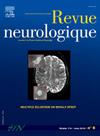Door-to-puncture time in ischemic stroke with large vessel occlusion in France: Patient and hospital factors
IF 2.3
4区 医学
Q2 CLINICAL NEUROLOGY
引用次数: 0
Abstract
Introduction
The efficacy of endovascular therapy (EVT) in reducing disability is strongly time-dependent. Door to groin puncture (DTP) time has been reported to be a reliable parameter to assess the delay between admission and treatment initiation and can be shortened via faster, more optimized workflow. We aimed to assess the DTP time in France and have analyzed potentially associated factors at both patient and hospital levels.
Methods
From January 2020 to December 2022, data were collected in the prospective, multi-centered, ongoing Endovascular Treatment in Ischemic Stroke (ETIS) registry. All patients directly admitted to comprehensive stroke centers with large vessel occlusion treated by EVT were included in the analysis and their DTP times were analyzed. We investigated hospital-related factors (prenotification, patient's hospital arrival location, type of imaging, number of available angiosuites, type of anesthesia) and patient-related factors, which could affect DTP time.
Results
Among 3847 patients from 28 centers [mean age: 71.2; median NIHSS: 16 (10–20)], the median DTP time was 105 minutes (IQR: 84 to 137). Pre-stroke mRS > 1, admission during off-hours and admission to centers equipped with only one dedicated angiosuite were associated with a longer DTP time. Centers not equipped with an emergency department had a significantly shorter DTP time.
Conclusion
The median DTP time in France is 105 min. Further efforts, such as increasing the number of available angiosuites in CSCs, and implementing direct imaging paradigms should be applied to optimize workflows and to reduce DTP time, a major marker of the efficacy of comprehensive stroke centers.
法国缺血性脑卒中伴大血管闭塞的门至穿刺时间:患者和医院因素。
血管内治疗(EVT)在减少残疾方面的疗效具有强烈的时间依赖性。据报道,门到腹股沟穿刺(DTP)时间是评估入院和治疗开始之间延迟的可靠参数,可以通过更快、更优化的工作流程缩短时间。我们旨在评估法国的DTP时间,并分析了患者和医院层面的潜在相关因素。方法:从2020年1月至2022年12月,收集前瞻性、多中心、正在进行的缺血性卒中血管内治疗(ETIS)登记处的数据。所有直接入住脑卒中综合中心并接受EVT治疗的大血管闭塞患者均纳入分析,分析其DTP时间。我们调查了可能影响DTP时间的医院相关因素(预通知、患者到达医院地点、影像学类型、可用血管套间数量、麻醉类型)和患者相关因素。结果:来自28个中心的3847例患者[平均年龄:71.2;中位NIHSS: 16(10 ~ 20)],中位DTP时间为105分钟(IQR: 84 ~ 137)。卒中前mRS bbbb1、非工作时间入住以及入住仅配备一个专用血管套件的中心与较长的DTP时间相关。没有配备急诊科的中心的DTP时间明显更短。结论:法国患者中位DTP时间为105min。进一步的努力,如增加CSCs中可用血管血管的数量,实施直接成像范例,应应用于优化工作流程和减少DTP时间,这是综合卒中中心疗效的主要标志。
本文章由计算机程序翻译,如有差异,请以英文原文为准。
求助全文
约1分钟内获得全文
求助全文
来源期刊

Revue neurologique
医学-临床神经学
CiteScore
4.80
自引率
0.00%
发文量
598
审稿时长
55 days
期刊介绍:
The first issue of the Revue Neurologique, featuring an original article by Jean-Martin Charcot, was published on February 28th, 1893. Six years later, the French Society of Neurology (SFN) adopted this journal as its official publication in the year of its foundation, 1899.
The Revue Neurologique was published throughout the 20th century without interruption and is indexed in all international databases (including Current Contents, Pubmed, Scopus). Ten annual issues provide original peer-reviewed clinical and research articles, and review articles giving up-to-date insights in all areas of neurology. The Revue Neurologique also publishes guidelines and recommendations.
The Revue Neurologique publishes original articles, brief reports, general reviews, editorials, and letters to the editor as well as correspondence concerning articles previously published in the journal in the correspondence column.
 求助内容:
求助内容: 应助结果提醒方式:
应助结果提醒方式:


